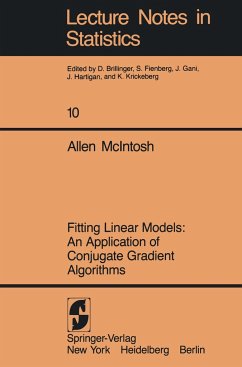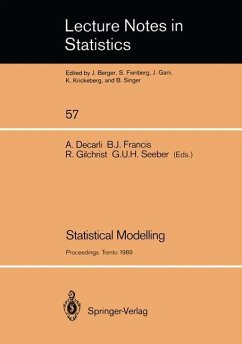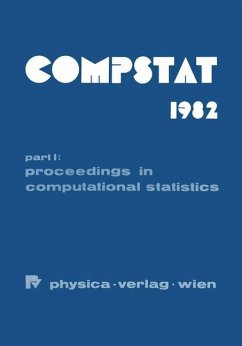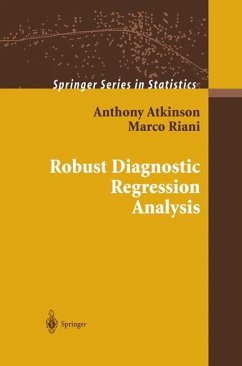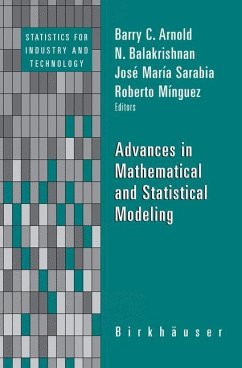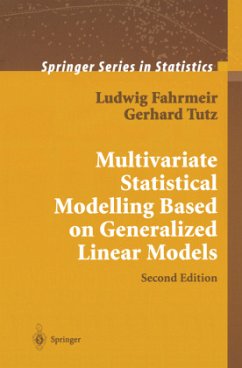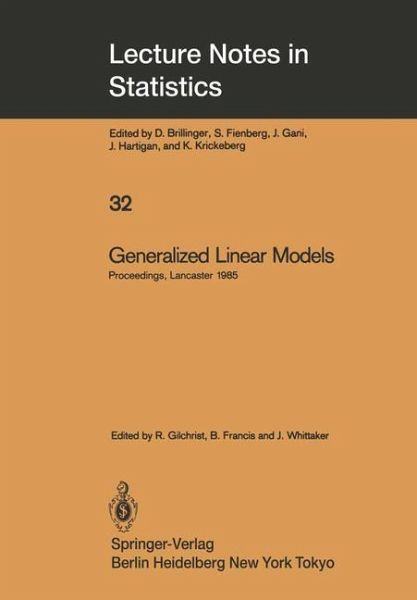
Generalized Linear Models
Proceedings of the GLIM 85 Conference held at Lancaster, UK, Sept. 16-19, 1985
Herausgegeben: Gilchrist, Robert; Francis, Brian; Whittaker, Joe

PAYBACK Punkte
39 °P sammeln!
This volume consists of the published proceedings of the GLIM 95 Conference, held at Lancaster University, UK, from 16-19 September 1995. This is the second of such proceedings, the first of which was published as No 14 of the Springer-Verlag Lecture Notes in Statistics (Gilchrist,ed,1992). Since the 1992 conference there has been a modest update of the GLIM system, called GLIM 3.77. This incorporates some minor but pleasant enhancements and these are outlined in these proceedings by payne and Webb. With the completion of GLIM 3.77, future developments of the GLIM system are again under active...
This volume consists of the published proceedings of the GLIM 95 Conference, held at Lancaster University, UK, from 16-19 September 1995. This is the second of such proceedings, the first of which was published as No 14 of the Springer-Verlag Lecture Notes in Statistics (Gilchrist,ed,1992). Since the 1992 conference there has been a modest update of the GLIM system, called GLIM 3.77. This incorporates some minor but pleasant enhancements and these are outlined in these proceedings by payne and Webb. With the completion of GLIM 3.77, future developments of the GLIM system are again under active review. Aitkin surveys possible directions for GLIM. one sOlMlWhat different avenue for analysing generalized linear models is provided by the GENSTAT system; Lane and payne discuss the new interactive facilities p~ided by version 5 of GENSTAT. On the theory Side, NeIder extends the concept and use of quasi-likelihood, giving useful forms of variance function and a method of introducing a random element into the linear predictor. Longford discusses one approach to the analysis of clustered observations (subjects within groups). Green and Yandell introduce 'semi-parametric modelling', allowing a compromise between parametriC and non-parametriC modelling. They modify the linear predictor by the addition of a ( smooth) curve, and estimate parameters by maximising a penalised log-likelihood. Hastie and Tibshirani introduce generalized additive models, introducing a linear predictor of the form 11 = (X + Efj(xj), with the fj estimated from the data by a weighted average of neighbouring observations.



